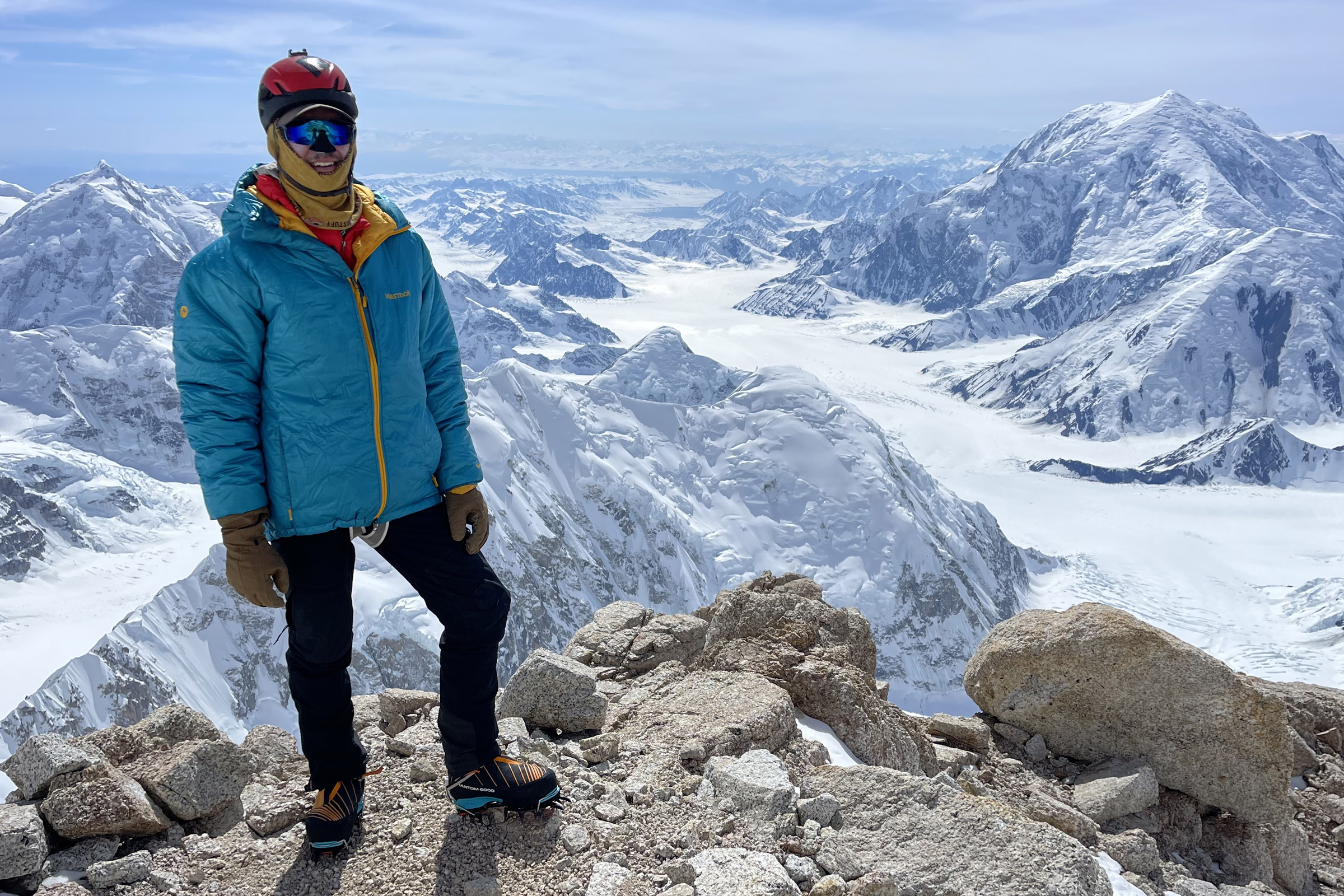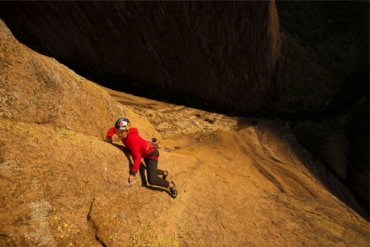I had the opportunity to review SCARPA’s latest update of its famed Phantom 6000 mountaineering boot during the spring climbing season in the Alaska Range.
My trip would encompass Mt. Huntington in pursuit of some technical objectives at lower elevations. Then a 25-day patrol with Denali Climbing Rangers of the West Buttress as a volunteer for the Denali Rescue Volunteers program.
This was the perfect itinerary to review the newest upgrades to the boots in both technical terrains as well as at high altitudes.
In short: The updated SCARPA Phantom 6000 proved wholly capable of climbing technical terrain and keeping feet warm up to the summit of Denali. The boot had the comfort and agility of a single boot but proved warm at higher elevations.
SCARPA Phantom 6000 Testing Grounds
Mt. Huntington

For the first part of our trip, two friends and I flew in to set up a base camp for 10 days at the base of the west face of Mt. Huntington. With a less-than-ideal forecast and ambitious goals, I was skeptical of success but nonetheless excited to climb in the Alaska range for the first time.
After a few days at camp, we set off to attempt a route called Polarchrome. It’s a route with little information and only two known previous ascents. Being new to the range and the less experienced mixed climber of the group, I followed the first four mixed crux pitches.
We found “heads-up” terrain up to M6/7 R in difficulty with less-than-desirable gear and poor snow conditions. From there, we made the decision to bail, as the weather was deteriorating. And the unstable forecast for the next few days didn’t seem promising.
After a few days in camp waiting out a small storm, my partner and I only had one decent weather day before our flight out. We opted to try the classic West Face Couloir. It’s an ice-climbing route mostly, with some steep snow and moderate mixed terrain sprinkled in.
With only one full day, our plan was to climb as far as possible before retreating to make sure we made our plane out the next morning. During our long day out, we slogged through thigh-deep snow for 3 hours on the approach and up more than 1,000 feet of steep snow. We then ascended six pitches of ice up to WI4 before descending and flying out early the next morning.
Denali West Buttress
For the second part of the trip, I geared up with the Denali Climbing Rangers to accompany them on a 25-day West Buttress search-and-rescue patrol. This is part of the Denali Rescue Volunteers program.
Our itinerary was to spend about a week making our way up from base camp to the 14k-foot camp before spending 10 days acclimatizing there. From there, we made a push to the 17k-foot camp and had a successful summit day thanks to amazing splitter weather.
I had the chance to use the SCARPA Phantom 6000 boots on all of the terrains from the 14k-foot camp upward. I was pleasantly surprised with the boot’s performance. Below are my thoughts after spending roughly 28 days this spring season using the new Phantom 6000.
SCARPA Phantom 6000 Boot Review

Sizing and Fit
My foot is a typical U.S. men’s size 8.5/9, and the 43s fit perfectly. I had previously tried on the 42s in the old model of the Phantom 6000. But I found them slightly too small length-wise.
During the technical ice climbing on Mt. Huntington, I never experienced any toe-bang. And I had plenty of wiggle room to keep my toes warm. I would describe the fit of the boots as quite wide. But in my opinion, that is probably better for most people rather than too narrow.
The extra width allowed me to wear thicker and warmer expedition-style socks. I did experience a bit of heel lift that was hard to combat, possibly from the bootie/outer boot interface. I’m not sure if that was related to my foot width or just sizing, but it was noticeable. Overall, I would say the heel lift was on par with other double boots I have tried.
I was impressed with how well the lace lock system worked. I didn’t have to adjust the laces nearly as much as I thought. Typically, I would need one initial adjustment at the base of the climb to tighten them up after the approach. They always stayed taut after that.
However, having to fiddle with the small laces was challenging with gloves. It was frustrating to remove my gloves to adjust them. But luckily, the boots required minimal fussing, and I was impressed with the comfortable fit.
Crampon Compatibility

During both my outings, I used fully automatic Petzl Darts as well as Petzl Sarken crampons. I used the Petzl Sarken steel heel component with both. I found the boots’ and crampons’ curves to match perfectly.
The heel piece of the Sarkens was slightly narrow and sometimes made it difficult to get an initial tight fit. I had to work a bit to get it seated, but once it was set, it proved very secure. The standard toe-bails were adequate. I didn’t need to swap them for the narrower versions.
Warmth
During our lower-elevation technical climbs, we climbed steep snow and ice up to WI4 in 15-degree Fahrenheit highs at 8,000-11,000 feet in elevation. On the long snow trudge and steep snow climbing to the base of the West Face Couloir route on Mt. Huntington, my toes did get a little cold.
The 1-3-plus-foot deep snow on the approach and standing belays produced some chill. However, I was impressed at how the boots seemed to warm back up after a little movement, and they never stayed cold for long.
I was particularly impressed with the inner booties of the Phantom 6000. I was skeptical of how warm the sock-like knit structure would be, but the Aerogel material of the soles did a great job insulating against the snow. I often wore the inner booties inside my down booties at camp because the Aerogel sole kept the cold out when standing around.
High on the West Buttress route on Denali, I wore the boots from the 14k-foot camp and up all the way to the summit. We had unseasonably stable and sunny weather with no wind, so warmth never became an issue.
I never experienced cold feet, except for briefly early in the morning on summit day, leaving the 17K-foot camp. However, in the typical windier and colder Denali conditions, I would want an overboot.
Climbing Ability

Climbing on Mt. Huntington, I was able to try the boots in technical terrain up to ~M7 and WI4. They performed well, and I was surprised at how similar they felt to a single boot. They were adequately stiff when I was front-pointing on small granite edges in my Dart crampons.
The boot climbed well on the technical ice with a small but manageable amount of heel lift. Maybe adding some material or a footbed below the bootie would take up some volume and help.
On the West Buttress of Denali, there is not much technical terrain, but my feet were comfortable during the long hours of hiking with heavy packs. Other team members complained of sore feet from their stiff boots after the long 14-hour summit day. But not me.
This was a surprise because I usually experience sore feet climbing in my Phantom Techs, but not with the new 6000. I suspect it was the Aerogel material that added a nice amount of cushion to the ball of the foot.
I really like this material for use in climbing boots. It feels like having a super-insulative gel insole rather than the rock-hard underfoot feel of other boots.
Overall, the new SCARPA Phantom 6000 climbed well. I’m excited to have them for more big mountain days in addition to cold cragging days in places like Hyalite.
Durability
During the course of my 6-week trip, the boots held up well, with no major signs of wear. The one area I noticed an issue was the gaiter zipper. After a cold day and having gotten wet from snow and then freezing, it got stuck in the middle.
It wasn’t until the boots thawed out that the zipper functioned normally. During a multiday outing, I might be concerned about breaking the zipper trying to get the boot off if it’s frozen at the end of the day or vice versa in the morning. I felt like I was going to break it at one point, so I waited until they melted to take them off.
I did not get the chance to test the boots extensively on any rocky terrain or approaches, so I can’t attest to the long-term durability of the soles. However, the Vibram Durstep rubber still looked new after the trip.
SCARPA Phantom 6000 Boots: Conclusion
I was impressed with the Phantom 6000. They climbed and felt like a single boot but were noticeably warmer and caused less soreness for my feet at the end of the day. I thank the Aerogel soles.
Durability was adequate. The one slight concern was the long-term durability of the gaiter zipper. The boots were much warmer than one might guess at first glance. I’m excited to have them for future outings. They are a great addition to the SCARPA line of boots.








